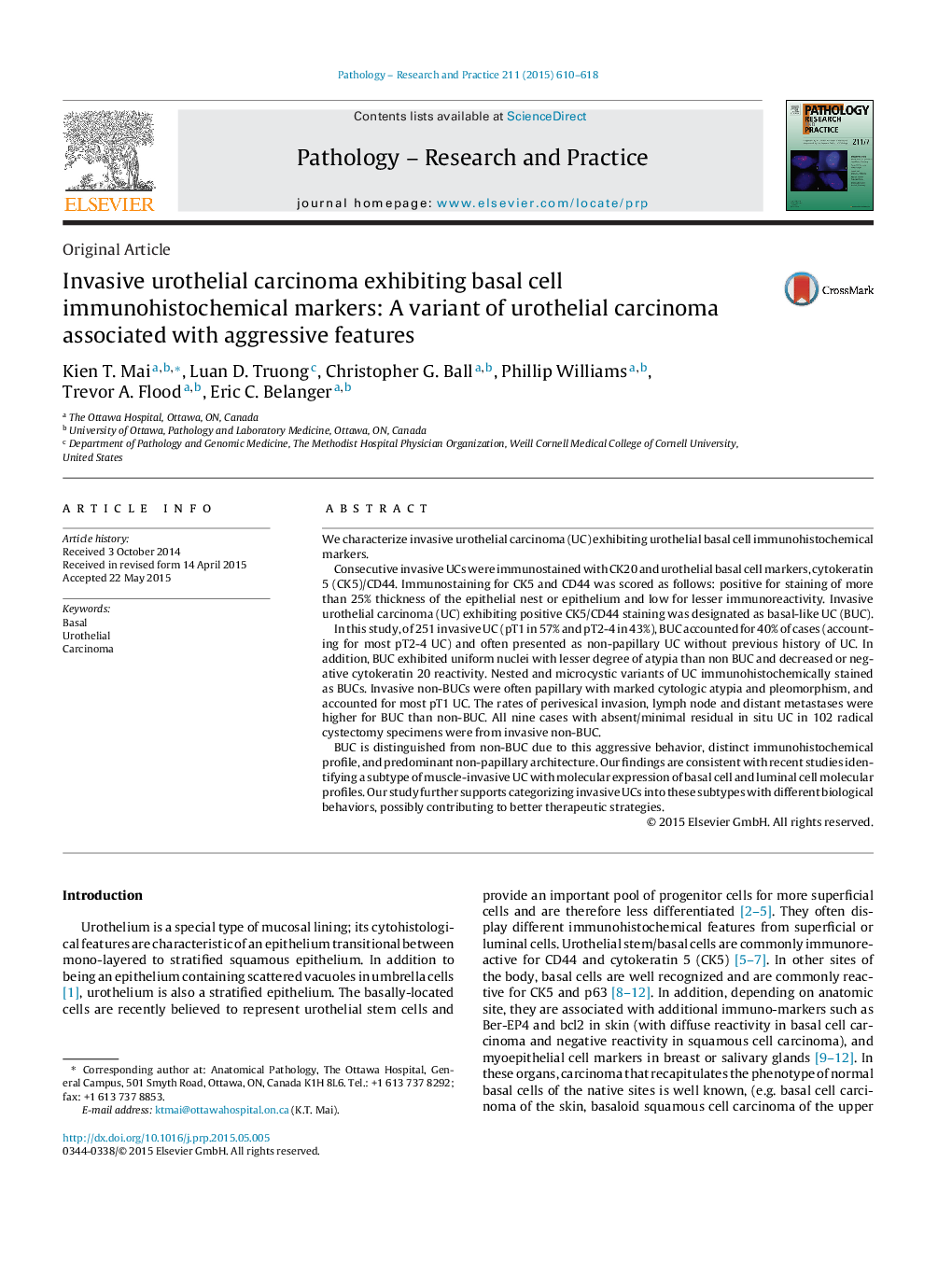| کد مقاله | کد نشریه | سال انتشار | مقاله انگلیسی | نسخه تمام متن |
|---|---|---|---|---|
| 2155101 | 1090381 | 2015 | 9 صفحه PDF | دانلود رایگان |
We characterize invasive urothelial carcinoma (UC) exhibiting urothelial basal cell immunohistochemical markers.Consecutive invasive UCs were immunostained with CK20 and urothelial basal cell markers, cytokeratin 5 (CK5)/CD44. Immunostaining for CK5 and CD44 was scored as follows: positive for staining of more than 25% thickness of the epithelial nest or epithelium and low for lesser immunoreactivity. Invasive urothelial carcinoma (UC) exhibiting positive CK5/CD44 staining was designated as basal-like UC (BUC).In this study, of 251 invasive UC (pT1 in 57% and pT2-4 in 43%), BUC accounted for 40% of cases (accounting for most pT2-4 UC) and often presented as non-papillary UC without previous history of UC. In addition, BUC exhibited uniform nuclei with lesser degree of atypia than non BUC and decreased or negative cytokeratin 20 reactivity. Nested and microcystic variants of UC immunohistochemically stained as BUCs. Invasive non-BUCs were often papillary with marked cytologic atypia and pleomorphism, and accounted for most pT1 UC. The rates of perivesical invasion, lymph node and distant metastases were higher for BUC than non-BUC. All nine cases with absent/minimal residual in situ UC in 102 radical cystectomy specimens were from invasive non-BUC.BUC is distinguished from non-BUC due to this aggressive behavior, distinct immunohistochemical profile, and predominant non-papillary architecture. Our findings are consistent with recent studies identifying a subtype of muscle-invasive UC with molecular expression of basal cell and luminal cell molecular profiles. Our study further supports categorizing invasive UCs into these subtypes with different biological behaviors, possibly contributing to better therapeutic strategies.
Journal: Pathology - Research and Practice - Volume 211, Issue 8, August 2015, Pages 610–618
